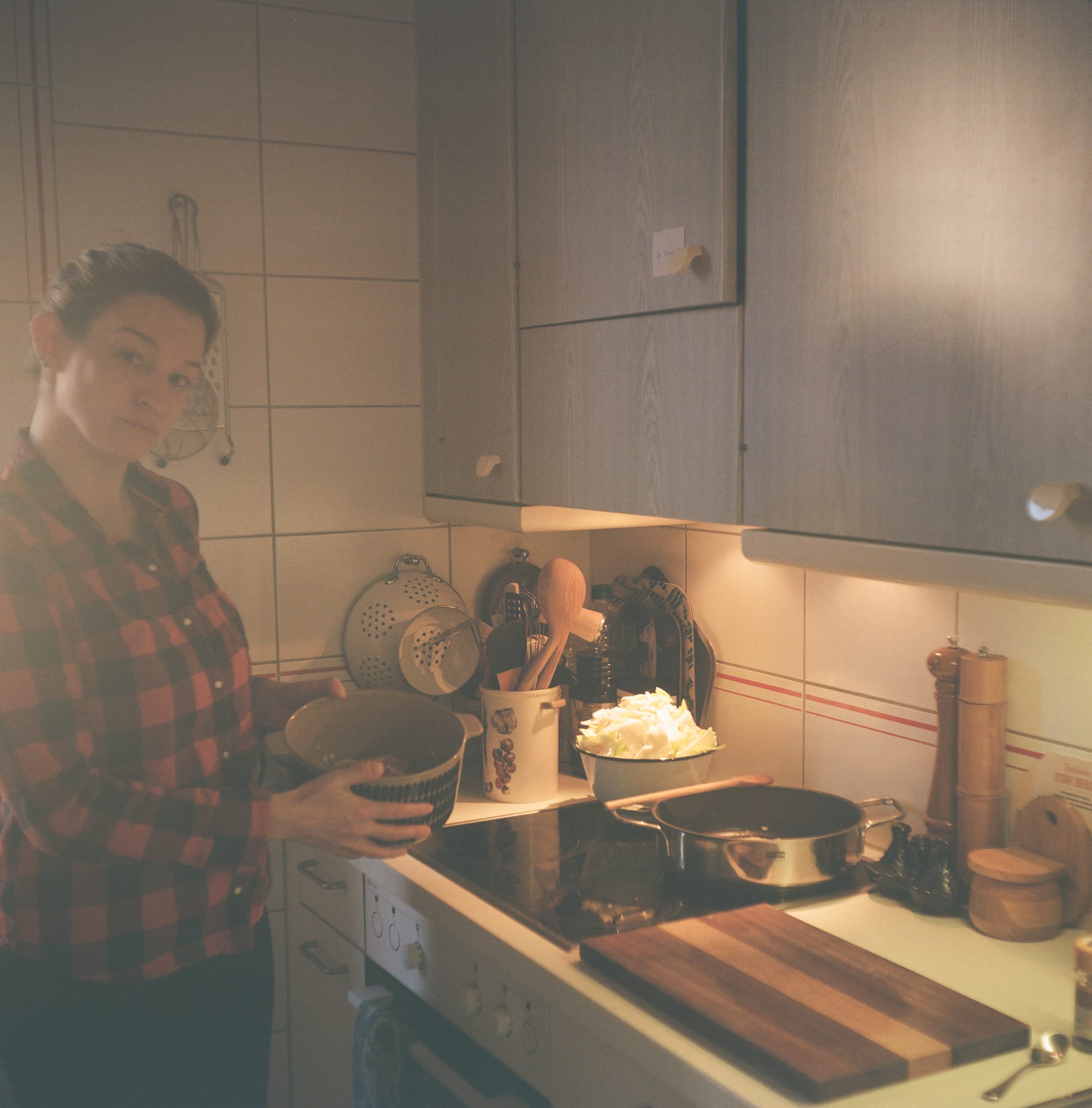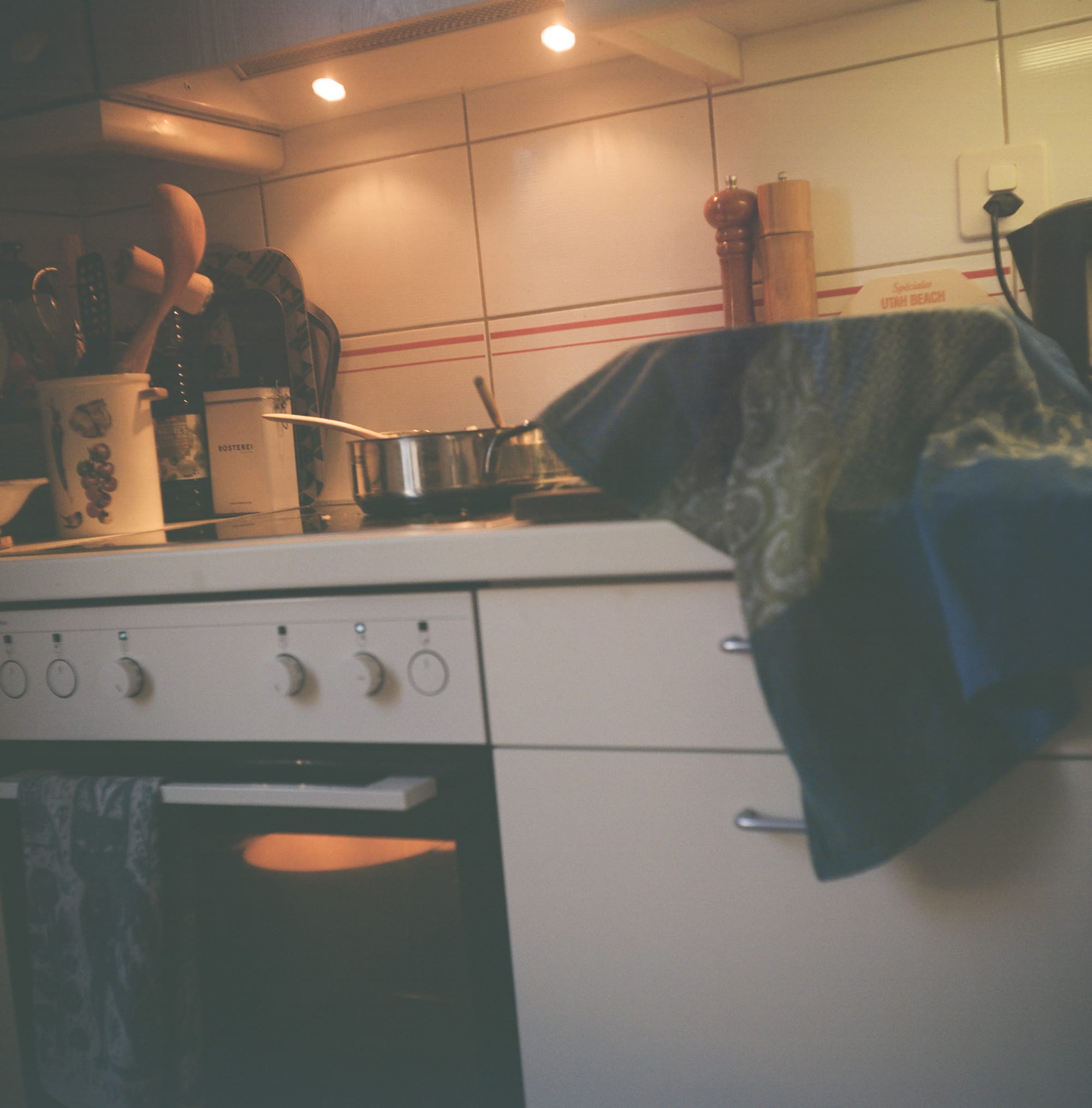What to eat CZECHIA 🇨🇿 Knedlo vepřo zelo
Knedlo vepřo zelo, also known alternatively as vepřo knedlo zelo, is what it says it is: bread dumplings, pork roast and sauerkraut... Typically served with beer, it is similar to other dishes in the Central European region, making it next to impossible to suss out a clear origin story.

Knedlo vepřo zelo
Published May 10, 2024 · by Amanda Rivkin Häsler
Knedlo vepřo zelo, also known alternatively as vepřo knedlo zelo, is what it says it is: bread dumplings, pork roast and sauerkraut. The roast itself is coated in caraway seeds and garlic (or shallot if your partner is allergic as mine is) and then left to slow roast over a bed of onions. The dripping from the pork onto the onions form the gravy after it is strained and flour is added.
Traditionally, knedlo vepřo zelo is served on Sundays or as a Christmas meal and to bring luck with the new year. As it is the national dish, it is found on menus at traditional restaurants across Czechia. Typically served with beer, it is similar to other dishes in the Central European region, making it next to impossible to suss out a clear origin story. Slovakia, Austria and neighboring Bavaria in Germany all have similar feasts of fancy.
While the origin may be impossible to ever uncover, it is clearly a tasty combination beloved across the heart of Europe. Some believe it may be Germanic in origin, but what is Germanic is also many other things because of the ever-shifting geography and populations and heavy German influence across Eastern Europe due to hundreds of years of migration, conquest, colonization and eventual expulsion in the wake the atrocities of the Second World War and the Soviet occupation of Europe’s eastern half.
Some similar dishes in the German-speaking world include Schweinshaxe und Leberkäse in Bavaria, Kassler in lower Saxony, as well as the Prussian dishes Mecklenburger Rippenbraten and Königsberger Klopse, from what is present day Kaliningrad, Russia’s present day outpost on the Baltic Sea. In Austria, Schäufele and Selchfleisch also bear a resemblance to knedlo vepřo zelo.
Knedlo or the plural, knedlík, comes from the German “Knödel.” The bread dumpling came into style in the 19th century but it is believed that boiling the bread dumpling (as opposed to steaming it as a Slovak friend married to a Czech advised) likely came about in the century before during military campaigns. In the field, the soldiers made due with what they had and they did not have an oven.
So what is Czech about knedlo vepřo zelo? It’s a staple of the national diet because it’s substance is sustenance. Czech food is known for being quite heavy on roasted meats and root vegetables. As a hearty people, their national dish is as well. And as far as flavor palettes go, onions and caraway seeds are also oft-used spices that are undeniable Czech in flavor.
Dobrou chuť!

Recipe
Most versions of this recipe available online, break down the three components into separate recipes. As this is Czechia’s national dish and served at once, I have combined the steps for all three dishes so the timing is right. To make one component but not all, skip the steps that do not serve you.
Ingredients:
For the zelo (sauerkraut)
2 yellow or white onions
50 grams of butter
Pinch of salt
Head of white cabbage
Caraway seeds
Bacon or lardons
For the vepřo:
Cooking oil
4 yellow or white onions
1 shallot or garlic clove
Caraway seeds
500 g of pork shoulder
For the knedle:
1 cup of milk
1 teaspoon sugar
1 teaspoon yeast
1 egg
4 cups of flour
1.5 teaspoons of salt
Step 1: (For the vepřo) Preheat the oven to 160 degrees Centigrade.
Step 2: (For the vepřo and the zelo) Chop up all your onions. Put two chopped onions in a pan with butter on a low heat to get them caramelizing straight away and add a pinch of salt. Chop the remaining three and put them in a pan that is greased to go in the oven with the pork.
Step 3: (For the zelo) With a serrated knife, remove the base of the head of cabbage and cut in half. Then slice horizontally and turn and slice again vertically so the head of cabbage is left in square pieces. Set aside.
Step 4: (For the vepřo) In a mortar and pestle combine a diced shallot and one teaspoon of caraway seeds.
Step 5: (For the vepřo) Wash and dry pork with cold water and a paper towel. Set on a plate and salt and pepper. Press the shallot (or garlic clove) and caraway seed combination onto the pork.
Step 6: (For the vepřo) Place pork on onions and add one cup of water to the base of the pan over the onions and place in the oven for approximately one hour to 75 minutes until done.
Step 7: (For the knedle) Now for the knedle. Combine one cup of lukewarm milk, one teaspoon of sugar and one teaspoon of yeast. Combine with a fork. Let sit for ten minutes.
Step 8: (For the zelo) Add sliced bacon or lardons to the caramelizing onions on the stove top. Turn up the heat to medium. Add a teaspoon of caraway seeds once bacon has begun to brown and then the cabbage combine. Return to low, medium-low heat, stirring occasionally.
Step 9: (For the knedle) In a separate bowl from the milk and yeast, combine flour and salt, add egg and mix together. Make a well in the middle and add the milk and yeast. Knead together and place in a floured bowl with a cloth over for approximately 40-45 minutes until dough rises.
Step 10: (For the knedle) After 35 minutes, get a steamer going with salt water on a low boil.
Step 11: (For the knedle) After 40-45 minutes, lift the cloth on the knedle dough, cut into two, form two cylinders and place in steamer for 25 minutes.
Step 12: (For the vepřo) Take pork out of oven after 60-75 minutes and cover in foil to keep warm.
Step 13: (For the vepřo) Strain the onions and remaining liquid. You can add the strained onions to the zelo (sauerkraut) if you choose, otherwise discard. Place remaining liquid on low heat on stove top, slowly adding flour until thickened to a gravy consistency. If needed, add butter or more liquid. Add pepper and a pinch of salt.
Step 14: (For the knedle) Remove from steamer and slice into pieces several centimeters thick.
Step 15: (For the knedlo vepřo zelo, the complete dish) Add slices of vepřo and zelo (pork and sauerkraut). Drizzle gravy over the pork and leave remaining gravy on the side. Voilà, knedlo vepřo zelo!

Tips, tricks and notes:
If you can, this dish is one best served with Pilsner Urquell or Staropramen, standard Czech beers. Both are available in Bern at Drinks of the World, located in the main rail station.
If it is a particularly cold day or you are in need of extra warmth, some standard Slivovice would also go nicely. The Balkan aisle at the discount grocery chain Denner should have what you need.
Learn where to eat Czech food in Switzerland.
Follow our social media pages @swissglobaldining on Instagram, TikTok and YouTube